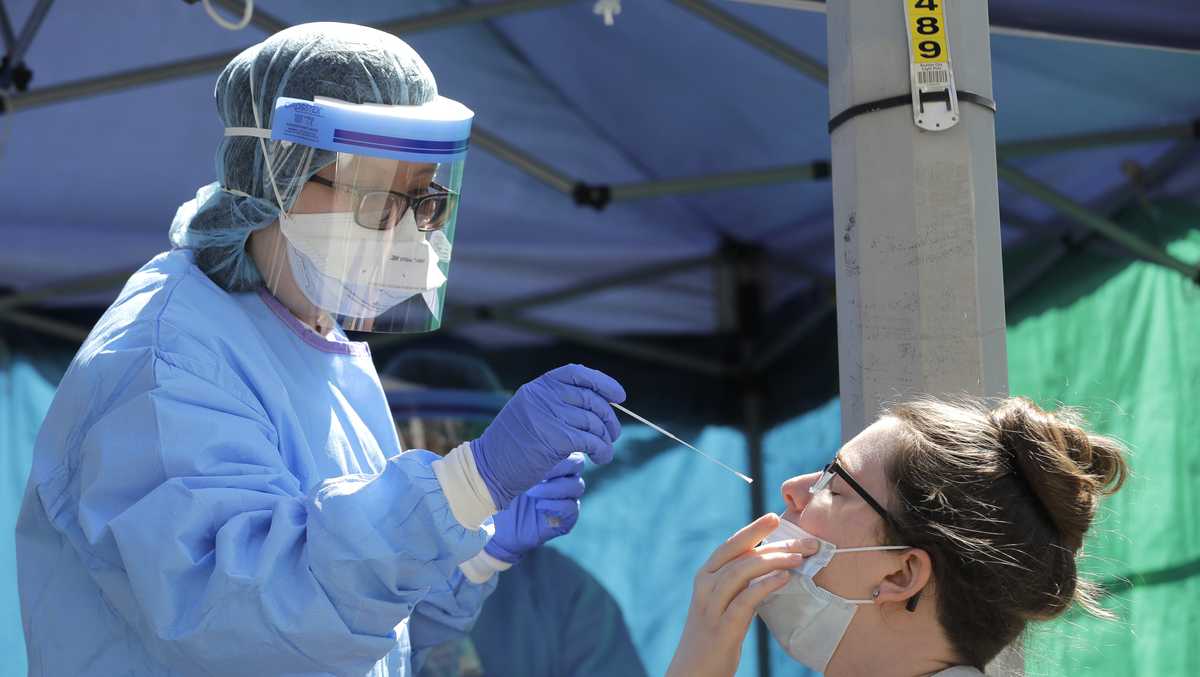It’s easy to fall into a false sense of security now that states have reopened. And many are already paying the price.States are shutting down businesses again. Popular beaches have closed. And the rate of new COVID-19 infections keeps growing in most states, threatening to reverse the progress made during stay-at-home orders.So what happened? When states reopened to try to save the economy, the fate of this pandemic shifted from government mandates to personal responsibility.But many are not heeding that responsibility, instead letting their guard down too early due to popular misconceptions:If the economy is open, the pandemic is getting better, right?No. “This is not even close to being over,” the head of the World Health Organization said.Only about 5% to 8% of the U.S. population has been infected with this new coronavirus, meaning we have a long way to go before reaching herd immunity.Herd immunity generally happens when 70% to 90% of a population becomes immune to an infectious disease — either because people have been infected and recovered, or because they’ve been vaccinated.But it will be many months before a COVID-19 vaccine might be publicly available — if one becomes effective and available at all.There’s also no cure for the novel coronavirus. So the only way to control this deadly pandemic is through personal behavior — like staying 6 feet away from others, including in social settings, and wearing a face mask.”It is critical that we all take the personal responsibility to slow the transmission of COVID-19 and embrace the universal use of face coverings,” Dr. Robert Redfield, director of the Centers for Disease Control and Prevention, said Tuesday.More than 127,000 Americans have died from COVID-19 in less than six months, with hundreds more deaths every day.I’m young and healthy, so I’m not worriedNew COVID-19 infections have skyrocketed in the Gen Z and millennial age groups. And while the death rate is lower among young adults, many are struggling with long-term effects from the disease.”Specifically, I’m addressing the younger members of our society, the millennials and the Generation Z’s,” Redfield said in calling for face coverings. “I ask those that are listening to spread the word.”In Florida, the median age group for those infected back in March was people in their 60s. But in the past few weeks, that median age has plummeted to young adults in their early 30s, Gov. Ron DeSantis said in late June.The rapid surge of infections in Florida is “being driven by that 18 to 35-year-old group,” DeSantis said.After Florida started reopening in early May, Erika Crisp and 15 friends went to celebrate a birthday at a bar where no one was wearing a mask. All 16 friends came down with COVID-19.During their night out, the virus seemed “out of sight, out of mind” because they didn’t know anyone who had contracted it, Crisp said. The group also had a false sense of security, she said, because their governor said it was safe to reopen.”I feel foolish. It’s too soon,” Crisp said.New Jersey physician Dr. Jen Caudle said she’s seen young patients suffer serious or long-term complications from COVID-19 — including strokes, shortness of breath, fatigue, or the inability to smell and taste long after recovering from the virus.Utah Jazz center Rudy Gobert, 28, was the first NBA player to report testing positive for COVID-19 back in March. Three months later, he still hasn’t fully recovered, Gobert told the French sports publication L’Equipe.Days before his diagnosis, Gobert had made light of the pandemic when he jokingly touched every microphone during a news conference.He later publicly apologized and urged the public to not fall into a false sense of security like he did.”I wish I would have taken this thing more seriously, and I hope everyone else will do so,” Gobert said.We’re checking the temperatures of all employees / customers / party guestsTemperature screenings won’t catch asymptomatic or pre-symptomatic carriers of coronavirus, who don’t feel sick but are still contagious.An estimated 40% of coronavirus transmissions happen without any symptoms, according to the CDC.Even those who do have symptoms might not have a fever. In fact, many older adults — the age group most likely to suffer severe complications from COVID-19 — don’t get a fever at all.I don’t need to wear a mask”As economies open up more, masks become more important, not less important,” said Jeremy Howard, a research scientist at the University of San Francisco.Howard has spent much of the past four months in Texas, where he noticed the use of face masks dropped as the state started reopening.Now, Texas is grappling with a dangerous resurgence of COVID-19, forcing the governor to shut down some businesses once again.At least 17 states and the District of Columbia now require people to wear masks in public when social distancing might not be possible.Arizona, Texas and Florida do not require face masks. All three states now have among the highest infection rates in the country, with Arizona closing bars, gyms and other businesses to deal with the crisis.If 95% of Americans wore face masks in public, it could prevent 33,000 deaths by October 1, according to the University of Washington’s Institute for Health Metrics and Evaluation. U.S. Surgeon General Dr. Jerome Adams said if you want more businesses to reopen and stay open, wear a mask.”Some feel face coverings infringe on their freedom of choice- but if more wear them, we’ll have MORE freedom to go out,” tweeted Adams, who was nominated by President Donald Trump.”Face coverings → less asymptomatic viral spread → more places open, and sooner! Exercise and promote your freedom by choosing to wear a face covering!”The rate of deaths is decreasing, so things are getting better, right?The U.S. recently reported its highest number of new COVID-19 cases in a single day, and doctors say the rate of infection is outpacing the increase in testing.”Our daily case/new infection rate has really skyrocketed to over 40,000,” s
- Fri. Jan 2nd, 2026

